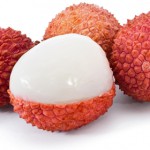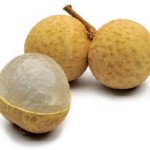Alternatives To Irradiation
Food irradiation is promoted as useful for the following purposes: delaying ripening, disinfestation, microbial control, quarantine treatment, shelf-life extension, sprouting inhibition, parasite control, and sterilisation. It has been hailed as the replacement for the use of toxic disinfestation chemicals, such as methyl bromide and ethylene oxide. According to the European Commission Report on Food Irradiation, however, “In practice, the use of this technique is rather limited although it is authorised in many countries.” 1
Irradiation is unnecessary because numerous clean and healthy alternatives exist.
While treatments may vary according to the type of food and desired outcome, some of the technologies currently in use include:
- Cold storage
- Cold treatment
- Heat/steam, vapour treatment
- Hot water dips
- Atmospheric control with oxygen, carbon dioxide or nitrogen
- Physical disinfestation, i.e. cleaning, washing
- Hygienic and safe production practices
- Pest exclusion zone
- Early harvesting
- Organic production
Australian Success Stories
Australian fruit growers wash their fruit for access to Japanese markets!
Organic Federation of Australia Chairman Andre Leu is concerned that irradiation could destroy Australian agriculture and horticulture. As export representative for the Australian Lychee Growers Association, Leu worked to develop a trade (export) protocol for Rambutan that involved no chemical or radiation treatment. The method is simple: after harvesting, the fruit is washed. It is then coated with food-grade/edible oil to seal the fruit against contamination and pests. Australian lychees are now being exported to Japan using this method. Using water and edible oil maintains the integrity of organic products – which are not allowed chemicals or irradiating – while facilitating trade of both organic and conventionally grown fruit.
North Queensland Mango growers expand market with “Modified Atmosphere”
“Mango growers in the Burdekin and Atherton Tablelands have created a small operation to process second grade mangoes. (Tableland Export Coop Ltd). This has been based on R&D commissioned to create a sliced mango product using MAP (Modified Atmosphere Technology). This produced a “fresh” mango slice with an extended shelf life (up to 6 weeks in a commercial environment). It has the advantage of being no mess, ready to use, discards 60% by weight of a whole fruit, with a high value to weight ratio and easier access to markets as a processed product… The distributor has advised that market enquiries already far exceed the capacity of the plant to produce.
The same group hopes to produce a fresh avocado product… Trials have been completed with positive results using second grade fruit… Trials have also commenced on a similar pawpaw product.
Initial discussions have been held with growers in the Northern Territory, with the prospect of expanding and extending these operations across Northern Australia.” 2
CSIRO explores ultra high pressure (UHP) processing
In Australia, CSIRO are conducting feasibility trials for the use of UHP processing for juices, jams and purees…. Ultra-high pressure (UHP) processing is an emerging non-thermal food treatment that destroys pathogens and spoilage microorganisms, thereby making food products safer and extending their shelf life…UHP processing is attractive for consumers as it meets demand for freshness and minimal processing as it does not require chemical additives or high temperatures. There is also no consumer negativity that is commonly associated with other food processing technologies (i.e. irradiation). UHP processing also has advantages for industry as the extended shelf life enables wider product distribution and results in fewer product returns. UHP also uses less energy then other technologies… 3
Non-chemical alternatives for trade and intrastate commerce
Many products, including food Australia has approved for irradiation, are already traded globally without the use of chemicals or irradiation. A combination of regulation, specific harvest practices, non-chemical cleaning, inspection and certification can be sufficient to allow products in to Australia or to facilitate intrastate trade. Australia should be promoting these alternatives in its own production and advocating for these methods for import and export approvals.
Longan and lychees may be imported from China and Thailand after:
cold treatment (CT) or vapour heat treatment (VHT) for the management of fruit flies; cold treatment or orchard control, inspection and remedial action for the management of litchi fruit borers; inspection and remedial action (ie. withdrawal, re-export, destruction or further treatment) for the management of mealybugs and soft scales; and operational maintenance and verification systems. 4
Mangos may be imported from India after:
vapour heat treatment (VHT) or hot water treatment (HWT) for the management of fruit flies; designated pest free places of production or production sites for the management of mango pulp weevil and mango seed weevil; and inspection and remedial action (with VHT or HWT) for other quarantine pests such as red-banded mango caterpillar, mealybugs and scale insects.5
Alternatives used in interstate trade in Australia:
- standard physical treatments, such as washing
- maturity and condition standards like hand-green condition – picking unripe fruit to avoid its
- infestation with pests – , and unbroken skin
- cold treatment or heat treatment
- area freedom, such as Fruit Fly Exclusion Zones
The Organic option
Organics is one of the fastest growing industries in Australia. Irradiation is not allowed in “Organic” production practices. Organic producers have been successfully supplying the increasing global organic market without using either chemicals or irradiation.
More examples: Hot water dips kills insects in bananas and pawpaws, cold storage kills fruitfly in grapefruit, steam treatment kills some forms of fruit fly in mangoes…The USA Department of agriculture developed an “acoustic coupler” which detects fruit fly larvae vibrations when the larvae eat the fruit, and infested fruit can then be removed. 6
REFERENCES
1 European Commission website: http://ec.europa.eu/food/food/biosafety/irradiation/index_en.htm
2 Commonwealth Department of Transport and Regional Services: Australia Forum – Northern Forum Reports – INVESTING IN NORTHERN AUSTRALIA,
KEY OPPORTUNITIES – EMERGING INDUSTRY SECTORS, Food Processing
3 Initial Assesment Report Proposal )291 Review of Novel Food Standard , Food Standards Australia New Zealand2005, p 88
4 Longan and lychee fruit from the People’s Republic of China and Thailand, Final Import Risk Analysis Report, Part A, February 2004, Australian Government Department
of Agriculture, Fisheries and Forestry, Commonwealth of Australia, 2004, pp 96-104.
5 Mangos from India, Draft Revised Import Policy, July 2004, Australian Gov’t Dep’t of Agriculture, Fisheries and Forestry, Commonwealth of Australia, 2004, pp 100-118.
6 Australian Consumers Association, Food Irradiation – An Inquiry, 1987



